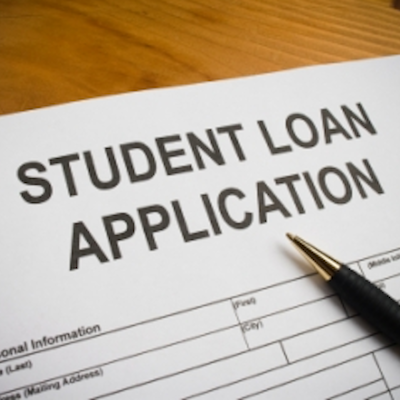Rhode Island Has 5th Highest Student Loan Debt in Country
Wednesday, December 11, 2013
The average Rhode Island graduate who borrowed to get a bachelor's degree in the class of 2012 has a student loan debt of $31,156, according to a recent report by the Institute for College Access and Success -- which ranks Rhode Island #5 for the highest student loan debt average in the country.
While the distinction for Rhode Island is a drop in one spot, having gotten the #4 position for "highest debt" last year, the amount has crept upwards from an average of $29,097 in debt for Rhode Islanders in the class of 2011, and $26,340 for those who graduated in 2010.
"Students should use this data as guide to make sure they aren’t over-borrowing. If students are planning to borrow well over the average levels stated in these reports, they should reassess their choices and see if they can come up with a plan to reduce their debt. This may mean making some difficult choices, like deciding to spend a year or two taking classes at the local community college instead of a pricey private school," said Chad Pastorius with the Rhode Island Student Loan Authority (RISLA).
GET THE LATEST BREAKING NEWS HERE -- SIGN UP FOR GOLOCAL FREE DAILY EBLASTSee How Rhode Island Colleges and Universities Ranked for Debt HERE
"Conversely, colleges can use this data to develop programs that limit borrowing for their students and reduce net college costs. For colleges, it should raise a red flag if they find their students’ average debt levels are well above those noted in the report for their geographic area," continued Pastorius.
According to the report, state averages for borrowers’ debt at graduation in 2012 ranged from $18,000 to $33,650. High-debt states remain concentrated in the Northeast and Midwest, with Delaware the highest -- and New Hampshire, Pennsylvania, Minnesota, and Rhode Island also had average debt over $30,000.
See How Rhode Island Compared to the Rest of New England BELOW
Private vs. Federal Loans
RISLA, a non-profit State authority, has been "providing affordable higher education loans" since 1981, according to its website. RISLA also offers students and parents free educational admissions and financial aid assistance through the College Planning Center of Rhode Island and financial literacy guidance at high schools and colleges throughout the State of Rhode Island."
Communications consultant and former Rhode Island Higher Education Assistance Authority Program Director Peter Kerwin said that students -- and families -- should however look first to max out on federal loans before looking to private ones as offered by agencies such as RISLA.
The Project on Student Debt reported that the proportion of Rhode Island students with debt for 2012 to be 69%, which is the sixth highest amount in the nation.
"Federal loans provide more forgiveness options than private ones," said Kirwin, noting that students can qualify for up to $33,000 in federal loans over four years. "Max out on your federal loans, then take private."
RISLA posts on their website the following message to students to maximize free financial aid -- and federal options.
Attention Students! Before borrowing, always remember to utilize any free financial aid, including grants and scholarships, first. Next, maximize your Federal Stafford Loan and Federal Perkins Loan (you must qualify for this loan) borrowing limits before turning elsewhere for loans. If you qualify for a Federal Perkins Loan, your school will include it in your financial aid award letter. To apply for a Stafford, complete the FAFSA and contact your school's financial aid office."
In addition, Kirwin noted that students and families should look at "FinAid" (www.finaid.org) as a resource to explore loan options.
Government to Ramp up Rankings?
In August, President Obama unveiled a "plan to make college more affordable" -- which would include, according to the White House, being able to "measure college performance through a new ratings system so students and families have the information to select schools that provide the best value."
"It is feasible for the president to establish a ratings system based on college access, affordability, and outcomes and tie those ratings to financial aid. In FY2012, The Federal government lent over $100 billion to students and parents and awarded approximately $50 billion in grants so they have a lot at stake when it comes to the success of students who attend certain colleges," said Pastorius.
"Currently, the Department of Education determines who gets federal loans and grants and how much they are eligible for. It's certainly possible that these formulas could be altered to include college ratings. Here in Rhode Island, we are fortunate to have very good schools so it's hard to see how a rating system would have an adverse impact for students attending school here."
GoLocal Mindsetter and college admissions advisor Cristiana Quinn said that in the meantime, students and families should utilize current tools available
"In November of 2011, the federal government mandated that every college in the U.S. post a net price calculator on their website that allows families to put in their tax information and receive an estimate of aid, based on that institution's policies and formulas. Perhaps, the federal government needs to mandate that all colleges release figures on student debt in order to encourage improvement and competition among institutions of higher education. However, those numbers will be broad in scope. I still encourage families to use net price calculators and financial aid offices on each campus as a more specific tool to determine their likely debt," said Quinn
Related Slideshow: New England States with the Highest Student Debt
A new report released by the Institute for College Access & Success' Project on Student Debt found that the average debt load for the class of 2012 was $29,400 -- up more than 10% from the previous year. Check out the slides below to see where New England ranks in terms of average student debt.
Related Articles
- Degree By Design: The Accessible Approach to a College Education
- RI Experts on the Biggest Challenges Facing Public Education
- NEW: Rhode Island Gets $670K For Workforce Training + Education
- Does Rhode Island Have a Clear Strategy for Higher Education?
- RI State Report: Education Bills + Chafee Switches Parties
- PODCAST: Education Experts Raise Questions About CCRI Spending
- Don Roach: My Education Crusade - An Interview with Deborah Gist
- Rhode Island’s Continuing Education Programs Gear Up For Fall
- PODCAST: RI Experts on Biggest Challenges Facing Public Education
- Don Roach: My Education Crusade Begins Today
- Special Weekend Edition: The State of Education in RI
- RI District by District Breakdown on Education Costs
- Education Expert Michael Thompson Speaks At RI’s Lincoln School
- Tom Finneran: The Death of Common Sense in American Education
- Education Experts Raise Questions About CCRI Spending
- Lisa Blais: Education Is Rhode Island’s Political Football
- NEW: RI ACLU Announces Third Lawsuit Against RI Education Board
- How To Secure Financial Aid and Scholarships For Your College Education
- NEW: ACLU Files Lawsuit Against Rhode Island Board of Education
- NEW: RI ACLU Files New Motion Against Board of Education
- Julia Steiny: Public Admits Being ‘Clueless’ About Education
- Arthur Schaper: RI Education: End the Pillage, Restore The Village
- NEW: Blue Cross Blue Shield RI Launches Healthcare Education Campaign
- NEW: Rhode Island ACLU Blasts Board of Education NECAP Vote
- Leaders’ Top 3 Education Issues in Rhode Island


















